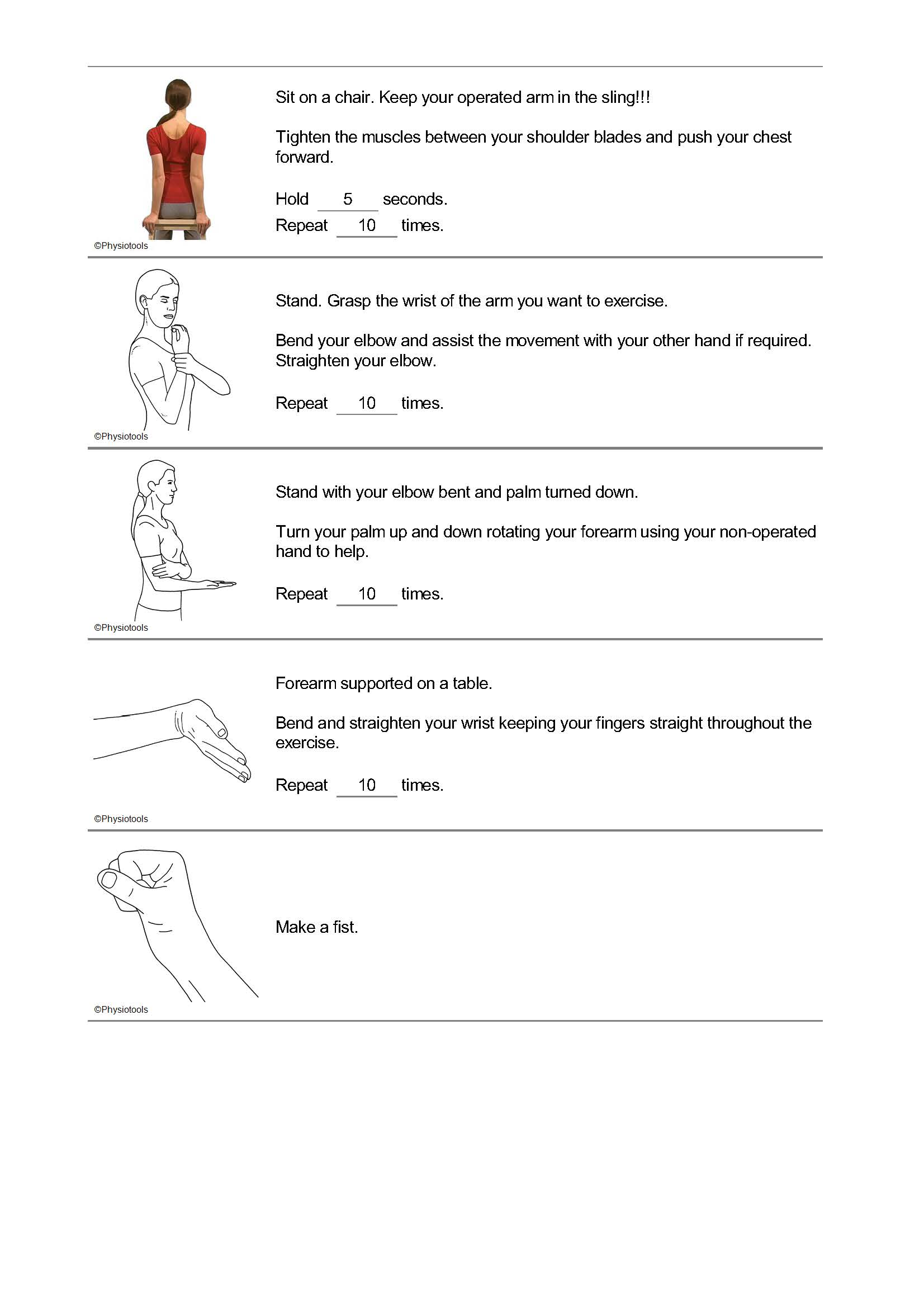
Rotator Cuff Repair (RCR)
What is the rotator cuff?
The rotator cuff is a group of muscles closely wrapped around the top of your arm (humerus). They help to stabilise the shoulder joint and control shoulder movements. These muscles originate from your shoulder blade to the top of your arm bone.
They can be damaged through general wear and tear and/or after a fall/injury. If one or more of these muscles are damaged, movement can become weak and painful.
What happens during surgery?
The aim of the operation is to repair the tear in the muscle/tendons. A number of small incisions are made to enable access to the shoulder joint. A small camera is used to clearly visualise inside the joint and repairs are made as required. Often a ligament is also released and a small bone may be shaved away to allow more space for your repaired muscle to heal.
What should you expect after surgery?
Wearing a sling
Your sling is essential to protect your repair. You must wear your sling as advised by your physiotherapist. This must be worn continuously day and night. The sling can be removed only to do your exercises and to wash and dress. Information regarding application of your sling is available from nursing staff.
Pain relief
A nerve block is sometimes used during surgery which means your arm may feel numb immediately after your operation. It is normal to feel some pain as the block wears off and you will be provided with some painkillers to help with this. It is important to take these as prescribed to keep pain to a minimum.
Ice
Ice can be helpful to reduce pain/swelling. Protect your dressings from getting wet with a plastic bag. Wrap a bag of ice/frozen peas in a damp towel and apply for 10-15 minutes. This can be repeated every 3-4 hours.
Wound care
Your wounds will need to be kept clean and dry. The nursing staff will provide you with more information about wound care on discharge.
Driving and work
You must not drive whilst wearing your sling. Please discuss this with your consultant or physiotherapist. When you can return to work will depend on what job you do. Your physiotherapist or consultant will be able to advise you on this.
Leisure activity and sport
The timescale for returning back to sport depends on your movement, strength and particular sport in mind. Please speak to your physiotherapist regarding this.
Rehabilitation
Outpatient physiotherapy will normally commence around 1 week after surgery. This should be organised before you are discharged. Rehabilitation is essential if you are going to get the most out of your shoulder operation.
You will need to start some gentle exercises before you are discharged from hospital and continue to do these regularly at home until you see your physiotherapist.
How quickly will I get back to normal?
Whilst your shoulder is in the sling you will be more or less one handed for all activities of daily living. Once out of your sling, you will be able to use your arm more as advised by your physiotherapist.
Remember, your shoulder will take approximately 4 to 6 months to significantly improve, with improvement continuing for 12-18 months.
More information
If you have any questions or need any advice about your exercises, then please contact the Physiotherapy Department between 8am-4pm Monday to Friday on 0121 812 3500.

